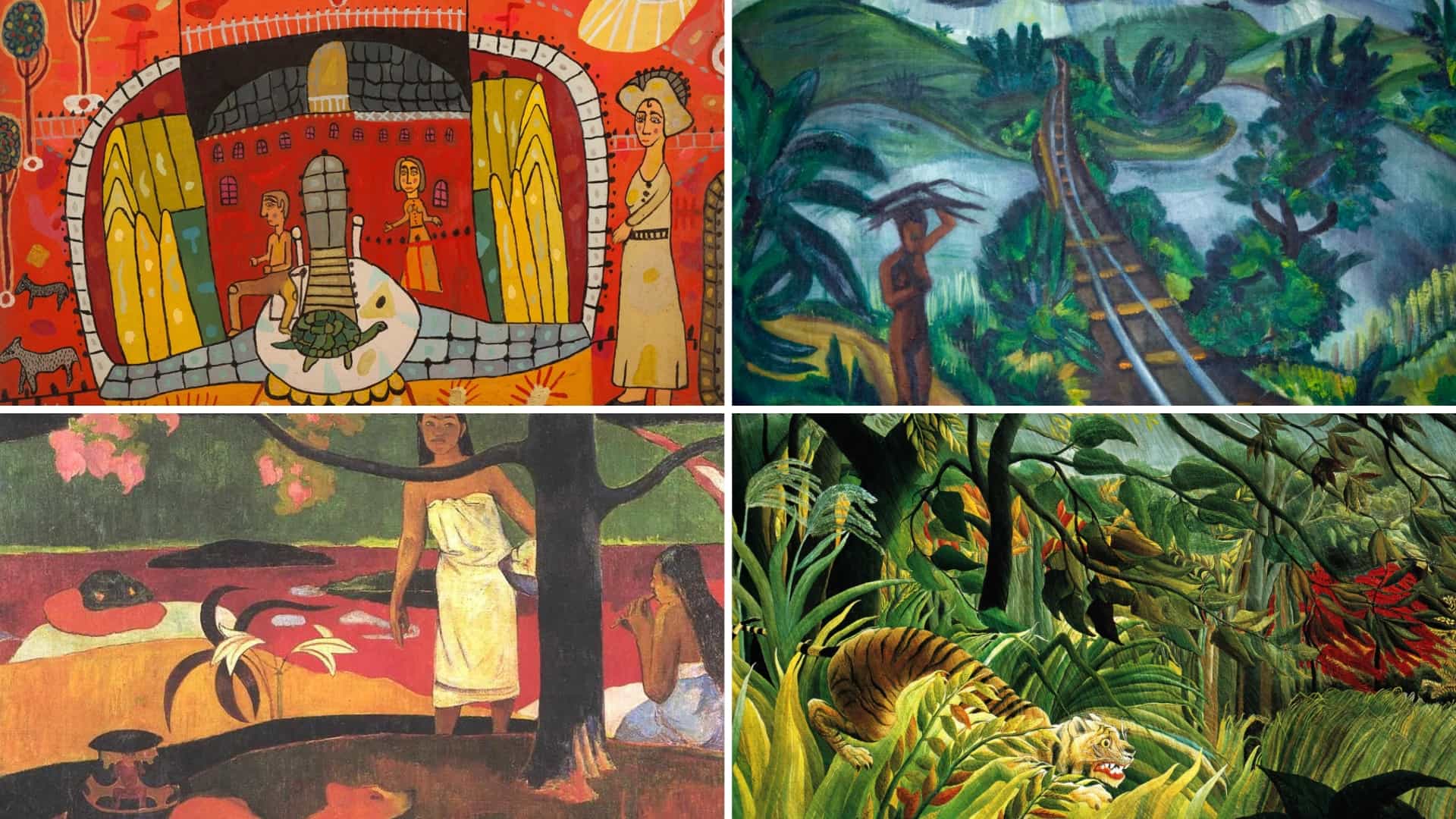What is Primitivism? The answer is complex and requires some historical and cultural context to fully understand. Primitivism bridges the gap between art and philosophy and has a tumultuous history. We’ll get started with an overview definition, then dig into the roots of the artistic style and the group of artists who pioneered it in order to develop a comprehensive understanding of Primitivism.
What is Primitivism
Let’s define Primitivism
Primitivism is one of numerous art styles and movements throughout history. You can learn about them all in our art styles index. We'll start with a definition and then move onto some artists and their work that best exemplify the style. For more, check out our index of art styles covering more specific and noteworthy movements.
PRIMITIVISM DEFINITION
What is Primitivism?
Primitivism is an interconnected art style and philosophical doctrine that believes primitive humans and their unsophisticated behaviors were more noble and innocent than modern, civilized people. It began in the late 1800s and some experts consider Primitivism a “found sensibility and cultural attitude” more than an art style unto itself. Primitivist ideals can be combined with other art styles. Fauvism and Cubism are thought to have arisen as a direct result of Primitivism. The style can be found in the traditional arts, in music, in philosophical ideals, and in literature.
Primitivism Art Characteristics:
- Can be combined with other art styles
- Began within tribal societies
- Nostalgic for a long ago time
When Did Primitivism Start
The roots of Primitivism
Primitivism as an art style comes from a mix of artwork from ancient cultures and the native art styles found in contemporary tribal societies. Often, Primitivist works are produced through a Western lens.
It was at one point considered an “ethnic art style” in the West, until Western artists began co-opting the style for their own work. Colonialism played a major role in its development as an art style.
A lesson on Primitivism art
It would not be wrong to call the Primitivist art style a form of cultural appropriation. In some ways, it is closer to an escapist fantasy version of a culture than it is to an accurate reflection of a cultural art style.
Many of the dominant voices in the Primitivist art style were European artists who wanted to make their idealized version of what they considered “uncivilized art.” These perceived “uncivilized” cultures were romanticized by Western artists and seen as more pure and/or noble.
Primitivism Examples
Notable Primitivist artists
There are many large names connected to the movement. Primitivism provided a stepping stone to other art styles like Fauvism and Cubism. The following video explains these connections in detail.
How Primitivism led to Fauvism and Cubism • What is Primitivism in art
Paul Gauguin was one of the most influential names in the movement. A desire for sexual freedom led Gauguin to experience other cultures outside of his native Europe. He took up residence in Tahiti, and the native art style was directly reflected in his work of the time.

Gauguin’s Spirit of the Dead Watching
Pablo Picasso is likely the largest name connected to the Primitivist art style. Picasso was first a practitioner of Primitivism, which directly led to the style he would be most known for: Cubism.

Picasso’s Les Demoiselles d'Avignon
Another major name in this style was Henri Matisse. Along with André Derain, Matisse led the development of Fauvism from a foundation of Primitivism. African art styles played a major influence in this period of Matisse’s work.

Music by Henri Matisse
Primitivism played a major role in the development of new art styles. The movement was instrumental in the shift undergone by the broader artistic world around the turn of the century.
UP NEXT
Explore More Styles and Movements
This was just one of many fascinating segments of art history. There are many eras, styles, artists, and movements to discover. Let's continue our study by choosing the next stop on your way to becoming an art aficionado. Below you can visit our Art Styles Index, our Art History Timeline, or choose an individual movement.
Share your vision with elegant shot lists and storyboards.
Create robust and customizable shot lists. Upload images to make storyboards and slideshows.
